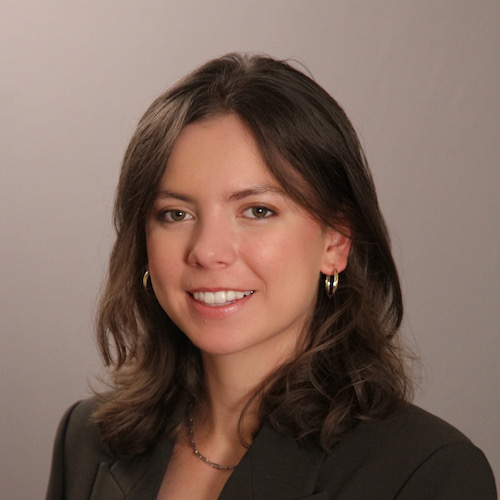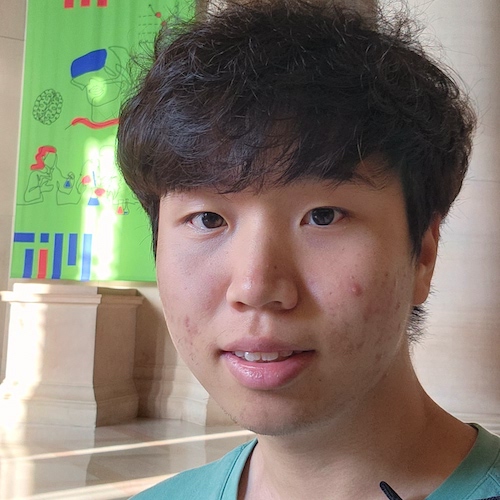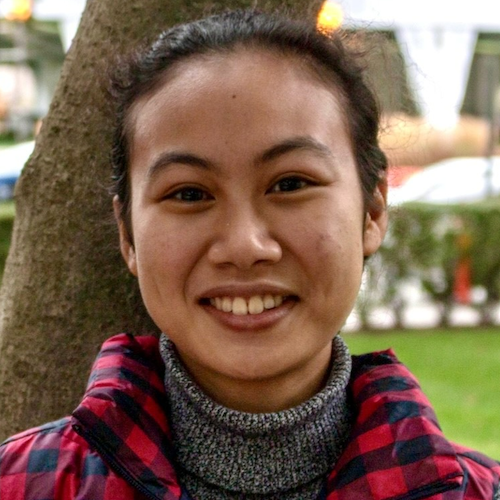 |
Lauren S. Aguilar ’25Mathematics Advisor: Kristin Bergmann, D. Reid Weedon, Jr. ’41 Career Development Professor, Earth, Atmospheric, and Planetary Sciences Cost analysis of long-term geological hydrogen storage Advisor: Christoph Reinhart, Director, Building Technology Program; Professor, Architecture Energy modeling and building retrofits in Addison County |
 |
Joy Bhattacharya ’24Electrical Engineering and Computer Science Advisor: David G. Atkin, Professor, Economics; Co-chair, Firms, J-PAL The impact of economic zones and related place-based polices |
 |
Daniel T. Brown ’25Electrical Engineering and Computer Science Advisor: Jessika Trancik, Professor, Institute for Data, Systems, and Society Evaluating demand side management strategies on various energy systems |
 |
Jakob Byrd ’25Mechanical Engineering Advisor and Direct Supervisor: John E. Parsons, Senior Lecturer, Sloan School of Management; Deputy Director for Research, Center for Energy and Environmental Policy Research Siting a nuclear platform green fuels facility on the Gulf Coast |
 |
Shealy Callahan ’26Mechanical Engineering Advisor and Direct Supervisor: John E. Parsons, Senior Lecturer, Sloan School of Management; Deputy Director for Research, Center for Energy and Environmental Policy Research Environmental regulations for desalination on- and offshore in the Gulf of Mexico |
 |
Shreya Chaudhary ’26Electrical Engineering and Computer Science Advisor: Robert C. Armstrong, Director, MIT Energy Initiative Synthetic dataset generation to support the energy transition |
 |
Ernesto Gomez ’26Electrical Engineering and Computer Science Advisor: Lawrence Susskind, Ford Professor of Urban and Environmental Planning, Urban Studies and Planning Renewable energy facilities siting conflict analysis and engagement |
 |
Victoria Hagenlocker ’26Electrical Engineering and Computer Science Advisor: Siqi Zheng, STL Champion Professor of Urban and Real Estate Sustainability; Faculty Director, MIT Center for Real Estate; Faculty Director, MIT Sustainable Urbanization Lab Building decarbonization policy tracker to support large-scale commercial retrofits |
 |
Eric Kim ’25, KENTECHEnergy Engineering Advisor and Direct Supervisor: Christoph Reinhart, Director, Building Technology Program; Professor, Architecture City-wide rooftop PV potential maps |
 |
Colin Klick ’24Management Advisor: Robert C. Armstrong, Director, MIT Energy Initiative Network analysis on wind energy in Maine |
 |
Selin Kocalar ’26Mechanical Engineering Advisor: Feng Zhang, James and Patricia Poitras Professor in Neuroscience, Department of Brain and Cognitive Sciences Characterization and functional elucidation of diverse CRISPR-Cas systems |
 |
Lesley L. Lambaric ’26Electrical Engineering and Computer Science Advisor: Desirée Plata, Gilbert W. Winslow (1937) Career Development Professor in Civil Engineering; Associate Professor, Civil and Environmental Engineering Evaluation and monitoring of methane gas emission by oil and gas development |
 |
Dohyeon Lee ’25, KENTECHEnergy Engineering Advisor and Direct Supervisor: Andy Sun, Iberdrola-Avangrid Professor in Electric Power Systems; Associate Professor, Operations Research Data analytics for the planning and operation of a highly renewable power system |
 |
Trent Lee ’26Mechanical Engineering Advisor: John H. Lienhard, Abdul Latif Jameel Professor of Water, Mechanical Engineering Harvesting lithium through the nanofiltration of salt-lake brines/Electrodialysis for lithium production from battery leachates (summer) Harvesting lithium through the nanofiltration of salt-lake brines (fall) |
 |
Elaine Liu ’24Mathematics Advisor and Direct Supervisor: Marija Ilić, Senior Research Scientist, Laboratory for Information and Decision Systems Optimal EV charging station allocation for grid reliability and consumer satisfaction |
 |
Miranda X. Liu ’26Electrical Engineering and Computer Science Advisor: Robert C. Armstrong, Director, MIT Energy Initiative Impact of variable renewable energy capacity factor profile aggregation level |
 |
Johlesa Orm ’26Artificial Intelligence and Decision Making Advisor: Dan Sweeney, Research Scientist; Lecturer, D-Lab Machine learning modeling to optimize bioenergy production |
 |
Samantha Rencher ’24Nuclear Science and Engineering Advisor and Direct Supervisor: John E. Parsons, Senior Lecturer, Sloan School of Management; Deputy Director for Research, Center for Energy and Environmental Policy Research The competitive landscape for distributed nuclear cogeneration |
 |
Geon Roh ’25, KENTECHEnergy Engineering Advisor and Direct Supervisor: Long Ju, Assistant Professor, Physics Novel optoelectronic devices based on 2D materials |
 |
Miles Roper ’25Mechanical Engineering Advisor: Asegun Henry, Associate Professor, Mechanical Engineering Charactering high-temperature near black emitters in thermophotovoltaic devices |
 |
Tomasz J. Slusarczyk ’25Mathematics Advisor: Richard de Neufville, Professor of Engineering Systems, Institute of Data, Systems, and Society Value of information and flexibility analysis for power system generation expansion planning under uncertainty |
 |
Emily Suh ’25, WellesleyComputer Science Advisor: Saurabh Amin, Professor, Civil and Environmental Engineering; Director, Henry L. Pierce Laboratory; PI, Laboratory for Information and Decision Systems Designing a user interface for JPoNG, an open-source tool for joint infrastructure planning |
 |
Christine W. Tang ’25Civil and Environmental Engineering Advisor and Direct Supervisor: Eric Anton Verploegen, Research Engineer; Lecturer, D-Lab Constructing a communication system to improve the clay pot cooler user experience |
 |
Reed Tubbs ’25Chemical Engineering Advisor and Direct Supervisor: Fikile Brushett, Associate Professor, Chemical Engineering Electrodeposition of metal species |
 |
Wendy Zhang ’26Electrical Engineering and Computer Science Advisor: Robert C. Armstrong, Director, MIT Energy Initiative Network analysis on wind energy in Maine |
 |
Justin Zhou ’26Management Advisor: Robert C. Armstrong, Director, MIT Energy Initiative Improvement of visualization of data from GenX and DOLPHYN models |